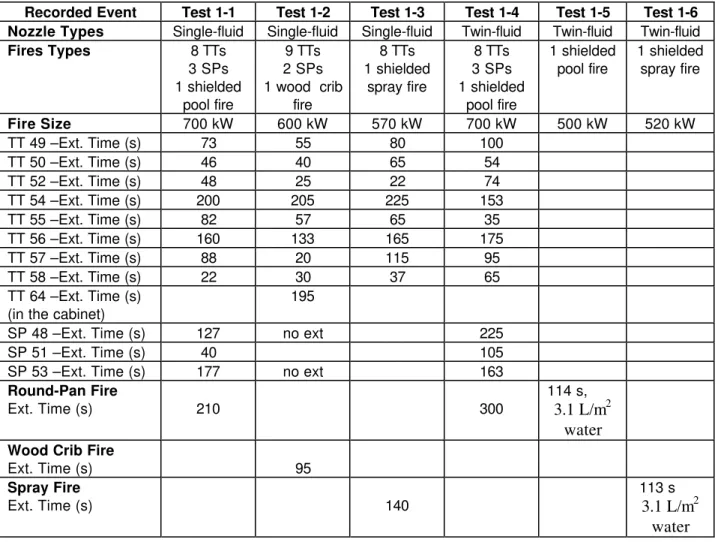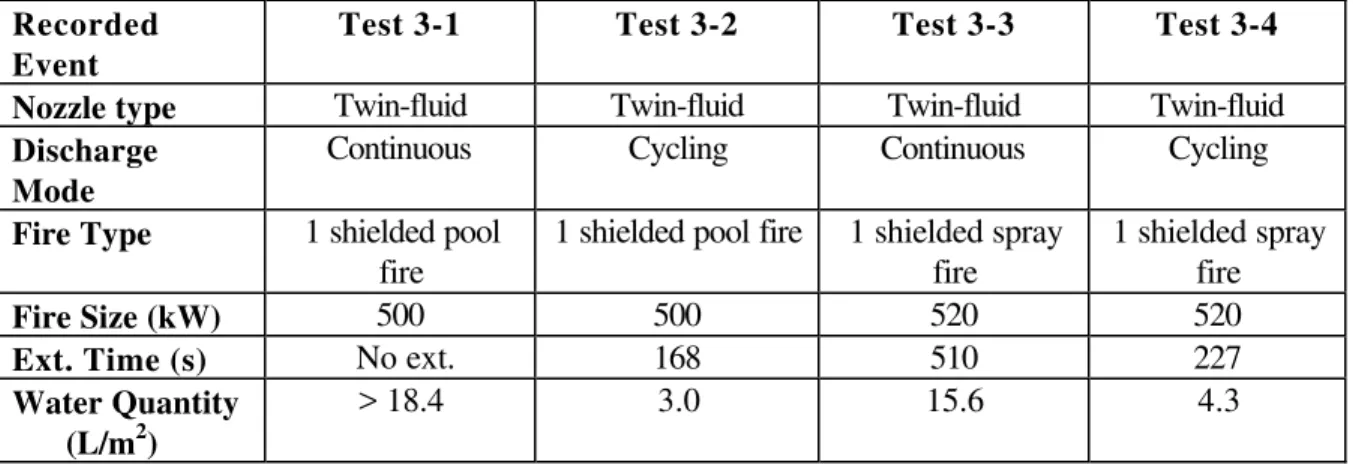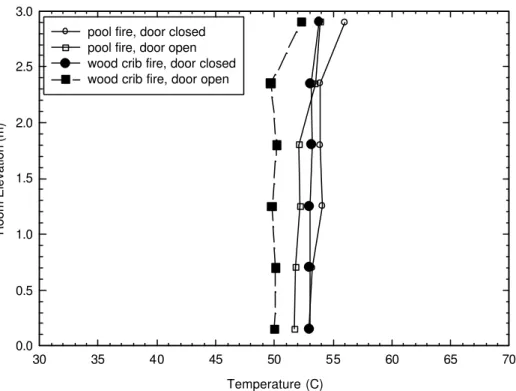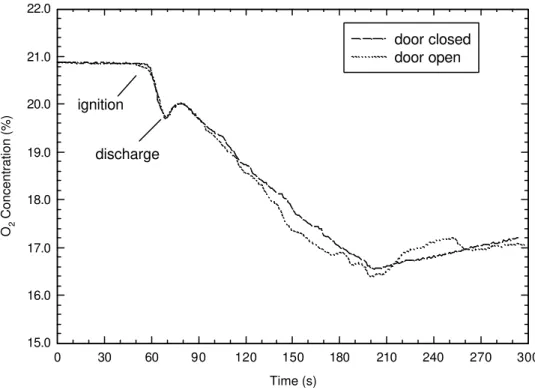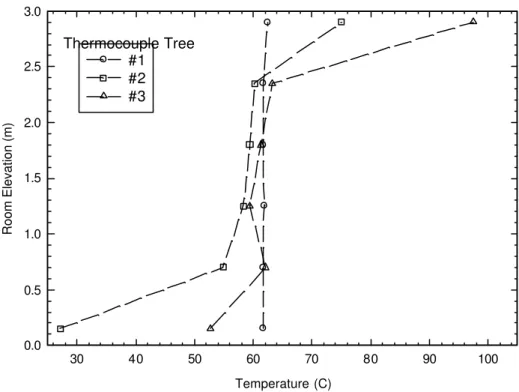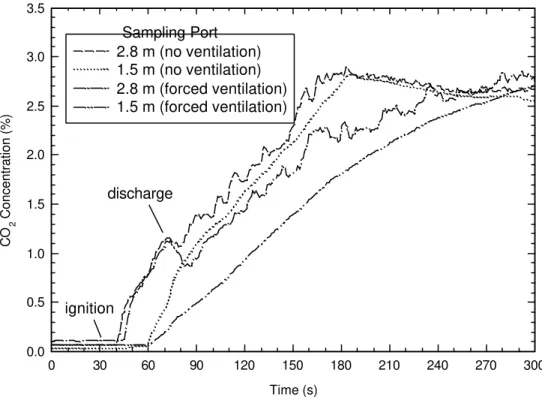READ THESE TERMS AND CONDITIONS CAREFULLY BEFORE USING THIS WEBSITE. https://nrc-publications.canada.ca/eng/copyright
Vous avez des questions? Nous pouvons vous aider. Pour communiquer directement avec un auteur, consultez la
première page de la revue dans laquelle son article a été publié afin de trouver ses coordonnées. Si vous n’arrivez pas à les repérer, communiquez avec nous à PublicationsArchive-ArchivesPublications@nrc-cnrc.gc.ca.
Questions? Contact the NRC Publications Archive team at
PublicationsArchive-ArchivesPublications@nrc-cnrc.gc.ca. If you wish to email the authors directly, please see the first page of the publication for their contact information.
NRC Publications Archive
Archives des publications du CNRC
This publication could be one of several versions: author’s original, accepted manuscript or the publisher’s version. / La version de cette publication peut être l’une des suivantes : la version prépublication de l’auteur, la version acceptée du manuscrit ou la version de l’éditeur.
Access and use of this website and the material on it are subject to the Terms and Conditions set forth at
Fire suppression performance of water mist under ventilation and
cycling discharge conditions
Kim, A. K.; Liu, Z. G.
https://publications-cnrc.canada.ca/fra/droits
L’accès à ce site Web et l’utilisation de son contenu sont assujettis aux conditions présentées dans le site LISEZ CES CONDITIONS ATTENTIVEMENT AVANT D’UTILISER CE SITE WEB.
NRC Publications Record / Notice d'Archives des publications de CNRC:
https://nrc-publications.canada.ca/eng/view/object/?id=1bfaf9ee-7cd8-46be-9971-a65546d6ee0b https://publications-cnrc.canada.ca/fra/voir/objet/?id=1bfaf9ee-7cd8-46be-9971-a65546d6ee0b
Fire suppression performance of water mist under
ventilation and cycling discharge conditions
Kim, A.; Zhigang, L.
A version of this document is published in / Une version de ce document se trouve dans : 2nd International Water Mist Conference 2002, Amsterdam, Netherlands, Apr. 10-12,
2002, pp. 61-76
www.nrc.ca/irc/ircpubs
Fire Suppression Performance of Water Mist under Ventilation and Cycling Discharge Conditions
Andrew K. Kim and Zhigang Liu,
Fire Risk Management, Institute for Research in Construction National Research Council of Canada, Ottawa, Canada, K1A 0R6
Phone #: (613) 993-9555, Fax #: (613) 954-0483 e-mail:
andrew.kim@nrc.ca
1.0 INTRODUCTION
When gaseous agents are used to extinguish fires, ventilation systems in the
compartment must be shut down, otherwise the fire protection system can be expected to fail. Recent research [1] showed that water mist fire suppression systems were able to extinguish fires effectively with a definable degree of ventilation, such as with open doors or vents in a compartment, while gaseous agents could not work effectively under such ventilation conditions.
In order to systematically investigate the fire suppression performance of water mist systems under ventilation conditions, a series of full-scale fire tests were carried out by the National Research Council of Canada [2]. The fire scenarios used in the tests included small and large pool fires, spray fires and wood crib fires. These fires were placed in different
locations within the compartment and some fires were shielded from the direct hit of water mist. The ventilation conditions in the compartment included non-ventilation (door closed), natural ventilation (door opened) and forced ventilation (door opened and an exhaust fan running). Two types of water mist systems (single-fluid and twin-fluid) were used in the tests. Also, the use of cycling discharge mode for the improvement of extinguishing performance of water mist system for ventilated fires was studied [3]. This paper presents the extinguishing performance of two water mist systems under natural and forced ventilation, and the improvement of fire
suppression performance by using cycling discharge mode.
2.0 TEST FACILITY AND FIRE SCENARIOS
The test facility consisted of a compartment, a water distribution network and appropriate instruments to monitor and record test results.
2.1 Test Room
The test room was an irregular-shaped, rectangular room with dimensions of 9.7 m x 4.9 m x 2.9 m high, and with a corner (2.9 m x 2.2 m) removed. The test room had a 2.0 m x 0.9 m door and three 0.56 m2 viewing windows. The room also had a 0.5 m x 0.5 m pressure relief vent attached to a fan in the south wall near the floor. Plan and elevation views of the room are shown in Figures 1 and 2.
Two types of water mist systems were used in the tests: a single-fluid/high pressure system and a low pressure water/air twin-fluid system. The detailed parameters of these two water mist systems are listed in Table 1.
The nozzle layout (number and location) of the two water mist systems was based on the guidelines provided by the manufacturers. For the single-fluid/high pressure water mist system, thirteen nozzles were installed on the ceiling, as shown in Figures 1 and 2. The spacing of the nozzles was 1.83 m x 1.83 m. One nozzle was located 1.24 m from the door. The total water discharge rate of the system was 78 Lpm.
For the twin-fluid/low pressure water mist system, fourteen twin-fluid nozzles were installed on the ceiling. The spacing of the nozzles was 1.63 m x 1.88 m. One nozzle was located 0.7 m from the door of the room. The total water discharge rate of the system was 70 Lpm.
2.3 Fire Scenarios
The test fires included tell-tale (TT) fires (each in a 75 mm diameter can), square-pan fires (each with dimensions of 0.3 m x 0.3 m), round-pan fires (0.7 m in diameter), spray fires and wood crib fires.
Eight tell-tale heptane fires were placed strategically throughout the room at different elevations (see Figures 1 and 2). One tell-tale fire was placed in the center of the mock-up cabinet. The total heat output of the eight tell-tale fires was approximately 50 kW. Three square-pan heptane fires were placed in three corners. The heat output produced by each square-square-pan fire was approximately 50 kW. One round-pan heptane fire and one heptane spray fire,
respectively, were placed close to the southeast corner of the room and covered with a
perforated metal box so that these fires were shielded from direct water spray. The dimensions of the box were 0.80 m x 0.84 m x 0.94 m high. The top of the box was covered by a layer of sheet metal with holes that constituted a 6% opening ratio. The sides of the box were covered by metal meshes with a 33% opening ratio. The operating pressure of the heptane spray fire was 5.8 bar. The heat outputs of the round-pan and spray fires were approximately 500 kW and 520 kW, respectively. One wood crib was placed at the southwest corner of the room. It
produced a heat output of approximately 450 kW. During the tests, these fires were selected to form specific fire scenarios that presented various fire challenges for water mist.
2.4 Instrumentation
Three thermocouple trees were set up in the room to measure room temperatures and the effect of ventilation on fire suppression. Each tree contained six thermocouples at
approximately 0.56 m intervals vertically. Thermocouple tree #2 was set up facing the door of the compartment and was 4.3 m from the door, which was used to measure the influx of fresh air. To monitor the extinguishment of the fires, thermocouples were also placed at each fire location.
Nine pressure taps were installed on the west wall to monitor the pressure changes in the room during the activation of the water mist discharge and fire suppression period. Three pressure taps were located at each of three elevations. The pressure taps at each location were manifolded to give an average pressure reading.
Two copper gas sampling ports, 12 mm in diameter, were used in the test. One sampling port, 1.5 m above the floor and projecting 0.3 m into the room, was used to measure the concentrations of CO and CO2. Another sampling port, 2.8 m above the floor and projecting 0.3 m into the room, was used to measure the concentrations of O2, CO and CO2. The gases were drawn through copper condensing coils immersed in water to remove water vapour and then measured by two Siemens Ultramat 22P Series for CO2 and CO concentrations and one Siemens Oxymat 5E O2 analyzer for O2 concentrations.
Two video cameras were set up at the south and north windows to obtain visual records of the water mist discharge and the behaviour of the fires during suppression.
2.5 Test Procedure
During the tests, ventilation conditions included the door closed, the door open (natural ventilation) and the combination of the door being open with an exhaust fan running (forced ventilation). The flow rate of the exhaust fan was 0.737 m3/s.
Test fires were allowed at least a 30 s pre-burn period before suppression commenced. During the pre-burn period, the door was kept open to allow fresh air to enter the room. At the beginning of the water mist discharge, the door was either kept open or closed, depending on the ventilation conditions for the test. For the tests with forced ventilation conditions, the exhaust fan was turned on at the same time as the water mist system was activated.
Tests were observed through three windows of the compartment and monitored by thermocouples placed at each fire location. Test data were recorded at 1-second intervals. Visual observation and fire temperatures measured at each of the fire locations determined fire extinguishment.
3.0 RESULTS AND DISCUSSION
The full-scale test series with two types of water mist systems were divided into three phases: tests with non-ventilation, natural ventilation and forced ventilation. The extinguishing time is defined as the time interval between the activation of the water mist system and the instant of fire extinguishment.
3.1 Water Mist Performance under Non-ventilation
Table 2 lists the test results obtained from phase I of the test series with two types of water mist systems, when there was no ventilation in the compartment. Pre-burn periods for the pool fire test and the wood crib fire test were 30 s and 90 s, respectively. During pre-burn
period, hot gases from the fires rose to the ceiling. When water mist was discharged downward from the ceiling level, it took 10 to 15 seconds for water mist to cool the gases in the upper zone as fine water droplets absorbed heat from their hot surroundings and quickly evaporated. At the same time, the discharge of water mist created a strong dynamic mixing in the compartment and the combustion products and water vapour in the hot layer near the ceiling were pushed downward by water mist to mix with the gases near the floor of the compartment, resulting in the rise of the gas temperatures and CO2 concentration near the floor. After the activation of the water mist system for about 20 to 30 seconds, gas temperatures and CO2 concentrations tended to be uniform throughout the compartment due to the dynamic mixing.
Table 2 shows the test results for non-ventilated condition. It shows that tell-tale fires located near the ceiling (#49, #54 and #57) and a tell-tale fire (#56) at the bottom of the corner near the door were the most difficult fires to be extinguished. They were far from nozzles and hardly hit by water mist. Two square-pan fires located at the ground of two corners were also difficult to extinguish due to the corner effects. In addition, the shielded round-pan fire in Test 1-1 was also difficult to be extinguished, compared to the unshielded wood crib fire in Test 1-2 and the shielded spray fire in Test 1-3.
With a large total heat release rate (700 kW) in Test 1-1, all fires in the compartment were extinguished, no matter where they were located in the room. For the spray fire test (Test 1-3), all the fires in the room were also extinguished. However, extinguishing times for the tell-tale fires (#54 and/or #56) located near the door were increased, compared with test results in Test 1-1 with a large total heat release rate. For the test with an unshielded wood crib fire (Test 1-2), all the fires, except for two corner square-pan fires, were extinguished. The failure to extinguish two corner square-pan fires in Test 1-2 may be attributed to a smaller total heat release rate (600 kW) in the compartment as well as that the unshielded wood crib fire that was a main heat release source in the room was quickly extinguished, resulting in slow depletion of oxygen and less water vapour production for fire suppression.
Water mist effectiveness in fire suppression was also determined by characteristics of water mist systems. Tests 1-1 and 1-4 compared the effectiveness of two types of water mist systems, when the same fire scenarios were employed in the empty enclosure. Compared to the single-fluid/high pressure water mist system, the twin-fluid/low pressure water mist system also extinguished all the fires located at the different positions of the compartment (Test 1-4), however, the extinguishing times were substantially increased. For example, the extinguishing time for the shielded large round-pan fire was extended from 210 s to 300 s, and the
extinguishing times for two corner square-pan fires (#48 and #51) were also substantially increased. The lower effectiveness of the twin-fluid/low pressure water mist system in fire suppression was attributed to its lower discharge pressure that did not produce high water spray momentum and strong dynamic mixing in the compartment [3]. It may also be attributed to its lower total water discharge rate in the tests (70 Lpm), compared to the single-fluid/high pressure system (78 Lpm).
During the test series in the simulated machinery space, the twin-fluid/low pressure water mist system extinguished both shielded pool fire (Test 5) and shielded spray fire (Test 1-6) that were located under the metal table. As shown in Table 2, the extinguishing time and water required for both fires were almost equal, because heat release rates in the two tests were almost equal.
3.2 Water Mist Performance under Natural Ventilation
To examine the impact of the ventilation on the effectiveness of water mist, the same fire scenarios used in the phase I of the test series were employed but the door of the compartment was kept open in the tests. Test results with natural ventilation (door open) using two types of water mist systems are listed in Table 3.
Continuing water mist discharge was able to cool the room substantially and restricted the mass exchange between the room and its surrounding. When the changes in the gas temperature in the compartment during pool fire test (Test 2-1) with the door being open was
compared to the same fire scenario with the door being closed (Test 1-1), both gas temperature distributions measured at three locations of the room were very similar. After a certain period of water mist discharge, the gas temperatures throughout the room were cooled to around 325 K and were about 30oC higher than the surrounding temperature of the room. Such low
temperature difference could only generate a small mass exchange between the compartment and its surroundings. As observed in tests, a small amount of room gases containing water vapour and combustion products were flowing out of the room through the upper portion of the door opening. At the same time, a small amount of fresh air was flowing into the compartment through low portion of the door. However, with the strong dynamic mixing generated by water mist discharge, the fresh air from outside of the room were quickly mixed with the gases in the room and lost their energy for subsequent penetration into the depth of the room. The impact of a small amount of fresh air on fire suppression, caused by the door being open, was limited to the locations close to the door opening.
Figure 3 compares the temperature profiles measured at the location of thermocouple tree #2 that was located close to the door, when the steady suppression conditions were achieved for both pool and wood crib fire tests with and without natural ventilation in the
compartment. The vertical temperature profile measured in tests with door open was uniform, same as in the case with door closed, showing insignificant effect of the door being open on gas temperature profile in the room.
Figures 4 and 5 compare the changes in CO2 and O2 concentrations in the compartment with and without ventilation for the spray fire test. The CO2 concentration in Figure 4 is an averaged value measured at two elevation locations. As shown in Figures 4 and 5, the door being open did not change the CO2 or O2 concentrations in the compartment, indicating that fire suppression in the compartment was not affected much by the door being open.
Table 3 shows that the single-fluid/high pressure water mist system extinguished all fires in the room, except two tell-tale fires (#54 and #56) near the door, when the door was kept open during the tests (Tests 2-1 and 2-3). These two tell-tale fires were not extinguished because they were located close to the door and were affected by the loss of water vapour and
combustion products through the door. However, suppression of other fires in the room was not influenced by the open door during the test. The extinguishing time for the spray fire was the same as that when the door was kept closed (non-ventilation). For the wood crib fire test with the door being open (Test 2-2), the effectiveness of the single-fluid/high pressure water mist system was similar with that of the door closed case. Two square-pan fires were not
extinguished, however, they were not extinguished in the test with the door closed either. Again, two tell-tale fires (#54) near the door were not extinguished due to the door being open. All other fires in the compartment were extinguished. The extinguishing time for the wood crib fire was delayed from 95 s to 120 s with the door open.
When the twin-fluid/low pressure water mist system was used in the open door tests, both the shielded pool and spray fires (Tests 2-4 and 2-5) were extinguished, however,
compared to the closed door test (Table 2), the extinguishing times were delayed (from 113 s to 145 s for the shielded spray fire, and from 114 s to 420 s for the shielded pool fire). This
suggests that the effectiveness of the twin-fluid water mist system was substantially affected by the door being open. As shown in Figure 6, with the twin-fluid water mist system, the
temperatures measured at the thermocouple trees #1 and #3 were still uniform vertically and had not been affected by the open door, but the temperatures measured at the thermocouple tree #2, close to the door, was no longer uniform vertically. The room temperatures near the
floor were lower than temperatures in the upper portion of the compartment due to the cold fresh air flowing into the room. Also, Figure 7 shows that the averaged CO2 concentration with the door being open was substantially lower than that with the door being closed.
These test results indicates that, with the door open, water mist still effectively controlled and extinguished fires located away from the door. For the single-fluid/high pressure water mist system, the effect of ventilation on fire suppression was mainly limited to the area close to the opening, and the extinguishment of fires located at the interior of the room was not affected by the door being open. For the twin-fluid/low pressure water mist system, however, its
performance was substantially affected by the changes in ventilation conditions due to its weak spray momentum, resulting in long extinguishing times.
3.3 Water Mist Performance under Forced Ventilation
In this test series, the impact of forced ventilation on water mist effectiveness was
examined, with the door open and the exhaust fan running. Table 4 lists the test results obtained from the test series with the twin-fluid/low pressure water mist system. Figure 8 shows the room temperature distribution during the test with the shielded spray fire. The room
temperatures measured at the thermocouple tree #1, located away from the door opening and exhaust fan, remained uniform vertically and were not disturbed by the forced ventilation.
However, the distribution of the room temperatures near the open door and the exhaust fan was considerably changed, showing much lower room temperatures near the floor and higher gas temperatures near the ceiling. This was because, with the forced ventilation, cold in-flow air through the door cooled the room temperatures near the floor, and with the loss of water mist effectiveness in cooling the hot gas layer due to forced ventilation, the gas layer near the ceiling rose to higher temperature.
Figures 9 and 10 compare the changes in O2 and CO2 concentrations in the
compartment with and without forced ventilation. The O2 concentration in the compartment with forced ventilation was substantially higher than that with the door closed. This allowed the fire to burn, and increased the difficulty for water mist to extinguish the fire. The CO2 concentrations in the compartment with forced ventilation were also lower than the values without ventilation, as the combustion products were vented out of the room. In addition, the difference in CO2
concentration at different elevations was increased in the forced ventilation case, as the dynamic mixing in the room was interfered with and reduced by forced ventilation.
Tables 4 shows that the twin-fluid water mist system could not extinguish the shielded round-pan fire (Test 3-1) with forced ventilation. Also, the extinguishment time for the shielded spray fire (Test 3-2) was significantly delayed from 114 s to 510 s, compared to non-ventilation conditions. The test results indicate that forced ventilation creates not only the influx of fresh air and exodus of combustion products and water mist vapour, thus increasing the fire burning efficiency, it also creates a forced-air convection in the room, making the extinguishing of the fire by water mist very difficult.
3.4 Suppression Performance with Cycling Discharge under Forced Ventilation
Several additional tests were conducted with the use of the cycling discharge mode to determine whether the cycling discharge mode improves the fire suppression performance of the water mist system under forced ventilation conditions. Same twin-fluid water mist system
was used in the tests. The cycling water mist discharge means that during fire suppression, the discharge of water mist is turned “on” for a short period of time, followed by a short period during which water mist discharge is turned “off”, and this cycle is continuously repeated. In the tests, the “on” and “off” cycle duration was approximately 20 s each.
Table 4 shows the results of the cycling discharge tests, and compares the fire suppression performance of water mist system under forced ventilation condition with continuous and cycling discharge modes. It shows that the use of continuous water mist discharge could not extinguish the shielded round-pan fire under forced ventilation conditions, however, the use of the cycling water mist discharge extinguished the same fire at 168 s. It was observed that the minimum oxygen concentration measured in the cycling discharge test was 16% and the maximum CO2 concentration measured was 3.3%. For the shielded heptane spray fire under forced ventilation conditions (Tests 3-3 and 3-4), both the continuous and cycling water mist discharge extinguished the shielded spray fire. However, the cycling
discharge reduced the extinguishment time from 510 s to 227 s and the water requirement from 15.6L/m2 to 4.3 L/m2, showing a significant improvement in suppressing forced ventilation fires. The test results show that for challenging fire conditions, such as fires under ventilated conditions, the use of the cycling discharge significantly reduced the extinguishment times and water requirements, showing a great improvement in the fire suppression, and in some cases, extinguished fires under forced ventilation conditions that could not be extinguished by the continuous discharge.
With the cycling water mist discharge, the gas temperature near the ceiling was higher than that of continuous discharge case. When the water mist discharge stopped, the
suppressed fire quickly recovered and the thickness of the hot gas layer near the ceiling
increased. As the water mist discharge was activated again, more water vapour was produced due to the interaction of water mist with larger flames and hotter gas layer, which diluted oxygen in the compartment, enhancing the water mist fire suppression effectiveness.
Another important factor that contributed to enhancing the fire extinguishment was the recurrent dynamic mixing in the compartment created by the cycling discharge. The gas concentrations and temperatures tended to be uniform throughout the compartment after the activation of the water mist system. As the water mist system was activated, the water droplets and steam, together with the combustion products in the hot layer, was pushed downward to mix with the gases in the lower level which created a condition for fire to be suppressed. With the use of the cycling discharge, such strong dynamic mixing occurred at each recurrent cycling discharge, while for the continuous discharge, the dynamic mixing only occurred once at the commencement of the water mist discharge. In addition, the strong recurrent dynamic mixing hindered outside air flowing into the interior of the compartment and effectively reduced the interference of the ventilation in fire suppression. As a result, the use of the cycling discharge performed better than the continuous discharge under ventilated conditions.
4.0 SUMMARY
During fire suppression with ventilation in the compartment, water mist controlled the fires and cooled the compartment, which in turn reduced the mass exchange between the room and its surroundings caused by temperature differences. Strong dynamic mixing, created by the water mist discharge, restricted the penetration of the outside air into the depths of the
compartment. The effect of ventilation on the effectiveness of water mist was dependent on the fire location in the compartment and the characteristics of the water mist system used. For the single-fluid/high pressure water mist system, which produced strong dynamic mixing by its high water spray momentum, only the fire extinguishment near the open door was influenced. The extinguishment of fires located far from the open door was not affected. For the twin-fluid/low pressure water mist system, which produced a lower water spray momentum, the air from outside of the compartment could penetrate deeper into the compartment and influenced the extinguishment of fires located further from the open door.
Under forced ventilation, the loss of a large quantity of water vapour and combustion products through the openings reduced the extinguishing capability of the water mist system. However, the use of cycling discharge mode improved the fire suppression performance of the water mist system. Fires under forced ventilation conditions, which could not be extinguished by the continuous discharge, was extinguished by the use of cycling discharge. The use of cycling discharge produced more water vapour in the compartment during test, due to the interaction of water mist with hotter upper layer gas temperature resulting from re-establishment of fire during off cycles. It also produced more combustion products in the compartment. In addition, the use of cycling discharge generated strong recurrent dynamic mixing in the compartment, which assisted fire suppression by water mist.
5.0 ACKNOWLEDGMENTS
The Department of National Defence Canada is gratefully acknowledged for their financial support of the project. The contribution of Dr. Joseph Su, Mr. George Crampton and Dr. M. Kanabus-Kaminska of Fire Risk Management in carrying out the project is also gratefully acknowledged.
6.0 REFERENCES
1. Pepi, Jerome S., "Performance Evaluation of a Low Pressure Water Mist System in a Marine Machinery Space with Open Doorway,” Proceedings of Halon Options Technical Working Conference, Albuquerque, NM, 1995, p. 424.
2. Liu, Z., Kim, A. K. and Su, J. Z., “Examination of Performance of Water Mist Fire Suppression Systems under Ventilation Conditions,” Journal of Fire Protection Engineering, 11 (3), August 2001, p. 164-193.
3. Liu, Z., Kim, A. K. and Su, J. Z., “Examination of Extinguishment Performance of a Water Mist System Using Continuous and Cycling Discharges,” Fire Technology, Vol. 35, No.4, 1999
Table 1 The characteristics of the single-fluid and twin-fluid water mist system Nozzle Types Water flow rate
(Lpm) Pressure (bar) Spray Corn Angle ( O) Droplet Size (Dv0.9 microns) Single-fluid (Reliable/Baumac) 6 70 90 200-400 Twin-fluid (Securiplex) 5 5.78 (water) 5.67 (air) 90 200-400
Table 2: Summary of Full-Scale Test Results under Non-Ventilation (door close)
Recorded Event Test 1-1 Test 1-2 Test 1-3 Test 1-4 Test 1-5 Test 1-6 Nozzle Types Single-fluid Single-fluid Single-fluid Twin-fluid Twin-fluid Twin-fluid
Fires Types 8 TTs 3 SPs 1 shielded pool fire 9 TTs 2 SPs 1 wood crib fire 8 TTs 1 shielded spray fire 8 TTs 3 SPs 1 shielded pool fire 1 shielded pool fire 1 shielded spray fire Fire Size 700 kW 600 kW 570 kW 700 kW 500 kW 520 kW TT 49 –Ext. Time (s) 73 55 80 100 TT 50 –Ext. Time (s) 46 40 65 54 TT 52 –Ext. Time (s) 48 25 22 74 TT 54 –Ext. Time (s) 200 205 225 153 TT 55 –Ext. Time (s) 82 57 65 35 TT 56 –Ext. Time (s) 160 133 165 175 TT 57 –Ext. Time (s) 88 20 115 95 TT 58 –Ext. Time (s) 22 30 37 65 TT 64 –Ext. Time (s) (in the cabinet)
195
SP 48 –Ext. Time (s) 127 no ext 225
SP 51 –Ext. Time (s) 40 105
SP 53 –Ext. Time (s) 177 no ext 163
Round-Pan Fire
Ext. Time (s) 210 300
114 s,
3.1 L/m2 water Wood Crib Fire
Ext. Time (s) 95 Spray Fire Ext. Time (s) 140 113 s 3.1 L/m2 water
Table 3: Summary of Full-Scale Test Results under Natural Ventilation (door open)
Recorded Event Test 2-1 Test 2-2 Test 2-3 Test 2-4 Test 2-5
Nozzle Types Single-fluid Single-fluid Single-fluid Twin-fluid Twin-fluid
Fires Types 8 TTs 3 SPs 1 shielded pool fire 9 TTs 2 SPs 1 wood crib fire 8 TTs 1 shielded spray fire 1 shielded pool fire 1 shielded spray fire Fire Size 700 kW 600 kW 570 kW 500 kW 520 kW TT 49 –Ext. Time (s) 50 55 115 TT 50 –Ext. Time (s) 55 40 65 TT 52 –Ext. Time (s) 30 35 20
TT 54 –Ext. Time (s) No ext. No ext. No ext.
TT 55 –Ext. Time (s) 75 25 70
TT 56 –Ext. Time (s) No ext. 100 No ext. TT 57 –Ext. Time (s) 50 120 110
TT 58 –Ext. Time (s) 20 25 65
TT 64 –Ext. Time (s) (in the cabinet)
No ext. SP 48 –Ext. Time (s) 128 No ext. SP 51 –Ext. Time (s) 40
SP 53 –Ext. Time (s) 230 No ext.
Round-Pan Fire
Ext. Time (s) 120
420 s,
12 L/m2 water Wood Crib Fire
Ext. Time (s) 120 Spray Fire Ext. Time (s) 140 145 s, 4.1 L/m2 water
Table 4: Test Results with Continuous and Cycling Discharge under Forced Ventilation Recorded
Event
Test 3-1 Test 3-2 Test 3-3 Test 3-4 Nozzle type Twin-fluid Twin-fluid Twin-fluid Twin-fluid
Discharge Mode
Continuous Cycling Continuous Cycling
Fire Type 1 shielded pool fire
1 shielded pool fire 1 shielded spray fire
1 shielded spray fire
Fire Size (kW) 500 500 520 520
Ext. Time (s) No ext. 168 510 227
Water Quantity (L/m2)
Temperature (C) 30 35 40 45 50 55 60 65 70 Room Elevation (m) 0.0 0.5 1.0 1.5 2.0 2.5 3.0
pool fire, door closed pool fire, door open wood crib fire, door closed wood crib fire, door open
Figure 3: Room temperature profiles along the elevations measured at Thermocouple Tree #2 with the door closed/opened at 90 s after discharge with single-fluid/high pressure water mist system
Time (s) 0 30 60 90 120 150 180 210 240 270 300 CO 2 Concentration (%) 0.0 0.5 1.0 1.5 2.0 2.5 3.0 3.5 door closed door open
Figure 4: CO2 concentrations in the compartment with the door closed and open in the spray fire test, when the single-fluid/high pressure water mist system was employed.
ignition discharge
Time (s) 0 30 60 90 120 150 180 210 240 270 300 O2 Concentration (%) 15.0 16.0 17.0 18.0 19.0 20.0 21.0 22.0 door closed door open
Figure 5 O2 concentrations in the compartment with the door closed and open in the spray fire tests, when the single-fluid/high pressure water mist system was employed
ignition discharge Temperature (C) 30 35 40 45 50 55 60 65 70 Room Elevation (m) 0.0 0.5 1.0 1.5 2.0 2.5 3.0 #1 #2 #3
Figure 6: Room temperature profiles along the elevations measured at thermocouple trees when the door was open for the pool fire tests with twin-fluid/low pressure mist system at 90 s after mist discharge
Time (s) 0 30 60 90 120 150 180 210 240 270 300 CO 2 Concentration (%) 0.0 0.5 1.0 1.5 2.0 2.5 door closed door open
Figure 7: CO2 concentrations in the compartment with the door closed and open for the pool fire tests, when the twin-fluid/low pressure water mist system was employed.
ignition discharge extinguishment Temperature (C) 30 40 50 60 70 80 90 100 Room Elevation (m) 0.0 0.5 1.0 1.5 2.0 2.5 3.0 #1 #2 #3
Figure 8: Room temperature profiles along the elevations measured by thermocouple trees under forced ventilation for the spray fire test with twin-fluid/low pressure water mist system at 50 s of discharge
Time (s) 0 30 60 90 120 150 180 210 240 270 300 O2 Concentration (%) 16.0 17.0 18.0 19.0 20.0 21.0 22.0 no ventilation forced ventilation
Figure 9: O2 concentrations in the compartment in the spray fire tests with no ventilation and with forced ventilation, when a twin-fluid/low pressure water mist system was employed in the machinery space
ignition discharge extinguishment (non-ventilation) Time (s) 0 30 60 90 120 150 180 210 240 270 300 CO 2 Concentration (%) 0.0 0.5 1.0 1.5 2.0 2.5 3.0 3.5 2.8 m (no ventilation) 1.5 m (no ventilation) 2.8 m (forced ventilation) 1.5 m (forced ventilation)
Figure 10: CO2 concentrations in the compartment during the spray fire tests with no ventilation and with forced ventilation, when the twin-fluid/
Sampling Port
ignition
